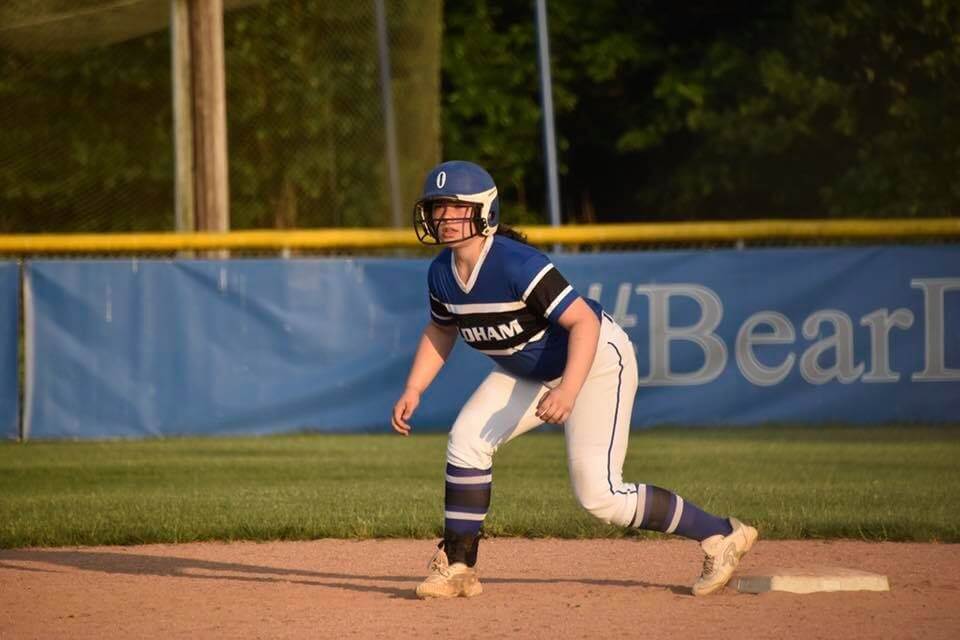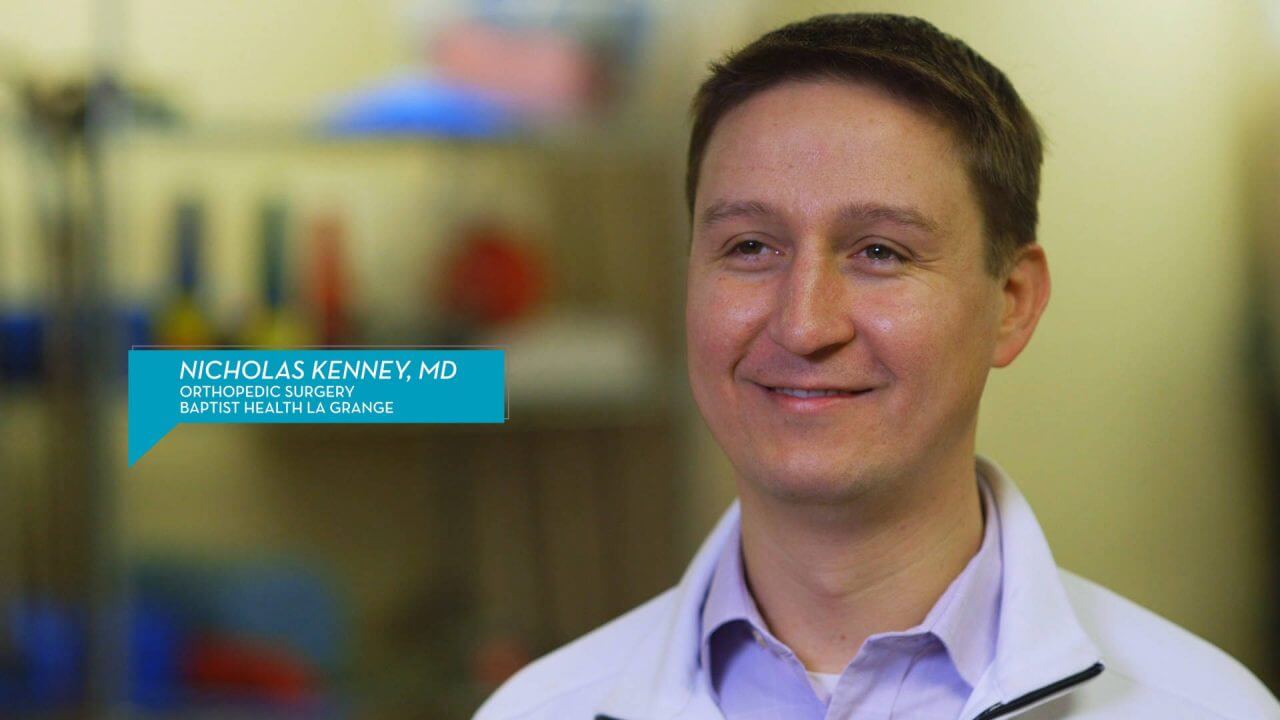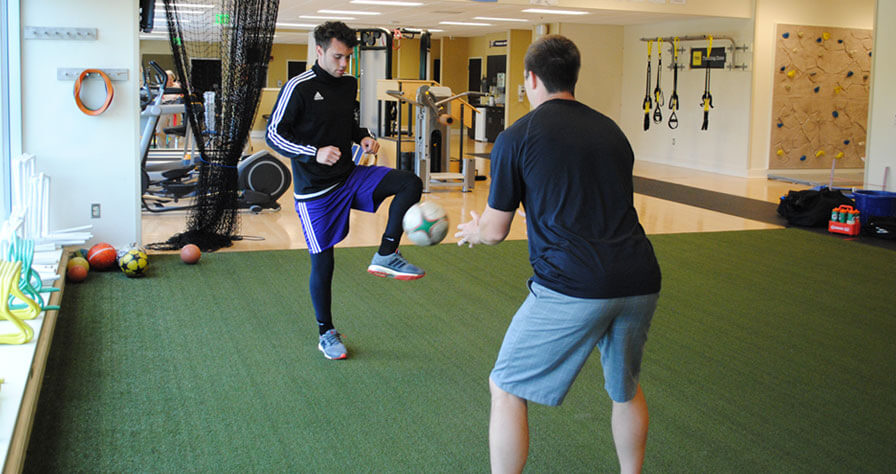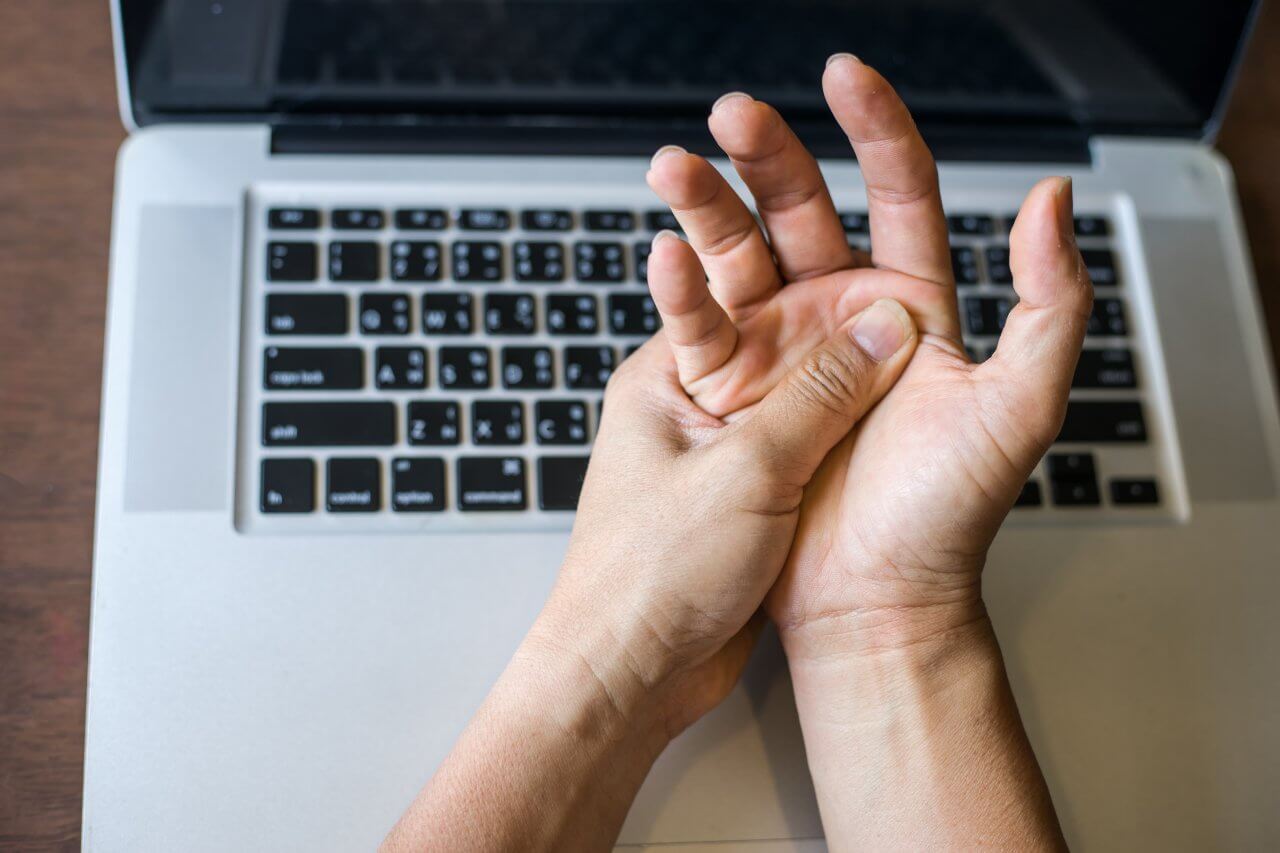Determination Fuels Recovery

It was Oldham County High School’s second game of the Kentucky High School State Softball Tournament. In the sixth inning, power hitter Allison Vialpando stepped up to the plate. She hit the ball and began running the bases. As she rounded first base, her body pivoted, but her knee stayed in place. Vialpando collapsed, and the team’s athletic trainer and coaches quickly surrounded her.
Vialpando walked off the field that day, not yet knowing she had torn her anterior cruciate ligament (ACL). Those steps were just the beginning of her journey.
A junior at Oldham County High School, Vialpando has been playing softball since she was four years old. She joined the high school team in fifth grade at the age of 12. She says it is the only sport she truly enjoys and one she has grown up playing with her family.
Baptist Health certified athletic trainer Kim McElhinny, LAT, ATC, is the team trainer for Oldham County high schools. She was working the game and examined Vialpando when the injury occurred. “We were hoping it was just a strain, but it seemed like something more throughout the day. She was experiencing more pain, more instability,” says McElhinny. When Vialpando tried to warm up the next day, her knee was too unstable. McElhinny referred Vialpando to team doctor and board-certified orthopedic surgeon Nicholas Kenney, MD.
An initial x-ray was clear, but Dr. Kenney was concerned about Vialpando’s swelling, knowing how the injury occurred. He ordered an MRI, which showed Vialpando had torn her ACL.
“Honestly, getting that call was very heartbreaking because my high school season had just finished and I was about to start the travel season, which is a lot of college recruiting, trying to earn a scholarship,” says Vialpando.
From Softball Star to Surgical Patient and Back
The ACL is a crucial structure in the knee for stability, particularly for athletes who participate in pivoting or cutting sports. Dr. Kenney recommended surgery. “The ACL does not have a very good blood supply to itself. In most scenarios, we cannot just reattach it to itself when it tears. We have to replace it,” he says.
In this case, Dr. Kenney used Vialpando’s own patellar tendon, which runs from the bottom of the kneecap to the top of the leg bone. “When the ACL is reconstructed in young, active people, the healing rate is much higher and the re-rupture rate is much lower when we use their own tissue, usually a hamstring or patellar tendon,” says Dr. Kenney. In less active patients or in those who have re-torn their ACL, surgeons often use cadaver tissue.
Vialpando underwent surgery at Baptist Health La Grange on June 25 last year. The surgery was successful, and Vialpando began physical therapy four days later. At that point, she had a lot of swelling and was in a lot of pain. Baptist Health physical therapist Andrew Stethen, DPT, MS, LAP, ATC, typically spends the first few weeks with a patient trying to control their pain, decrease the swelling and increase the early range of motion. Vialpando recovered quicker than most. “She’s very determined. Everything I asked her to do, she did, if not more. She’s extremely hard-working, and she was up for the challenge every single day that I’ve seen her,” says Stethen.
The next four to five months of rehab for ACL reconstruction are about building strength and focusing on agility, balance, and coordination. Vialpando never missed a therapy session, and in fact, Stethen says she was always early.
Vialpando’s determination is paying off. She has graduated from physical therapy and is awaiting her ACL function test, a test that evaluates how the surgical leg compares to the non-surgical leg. Once she passes this, she will be cleared to play softball again. Dr. Kenney tells most patients it will be eight to 12 months before they return to running, cutting and pivoting activities, but Vialpando is on track to get back sooner. “Her strength and range of motion are perfect. She has done really well. She just did it a lot quicker than normal,” says Stethen.
For patients like Allison Vialpando, Baptist Health’s team approach to sports medicine allows for better-coordinated care, which leads to better outcomes. “Coordination is crucial in trying to keep from reinjury and making sure we’re allowing the athlete to do as much as they can do without putting them in harm’s way,” says Dr. Kenney.
Vialpando hopes to be joining her school team soon for the spring season.
“My goal is to play college softball. In reality, I know that even if I don’t, it’s okay. It’s just that softball has taught me a lot, and I am looking forward to learning more from it, as much as I can for as long as I can,” she says.
When you’re an athlete, good is never good enough. You’re constantly pushing yourself to achieve new goals. At Baptist Health, we have that same ambition and determination. Our team is a trusted source for exceptional sports injury care – but we don’t stop there. We are a sports medicine program that’s dedicated to helping athletes prevent and overcome injuries. In fact, Baptist Health is one of the most comprehensive sports medicine programs in central Kentucky. Learn about our uncommon services and partnerships that you wouldn’t expect to find in a sports medicine program.



